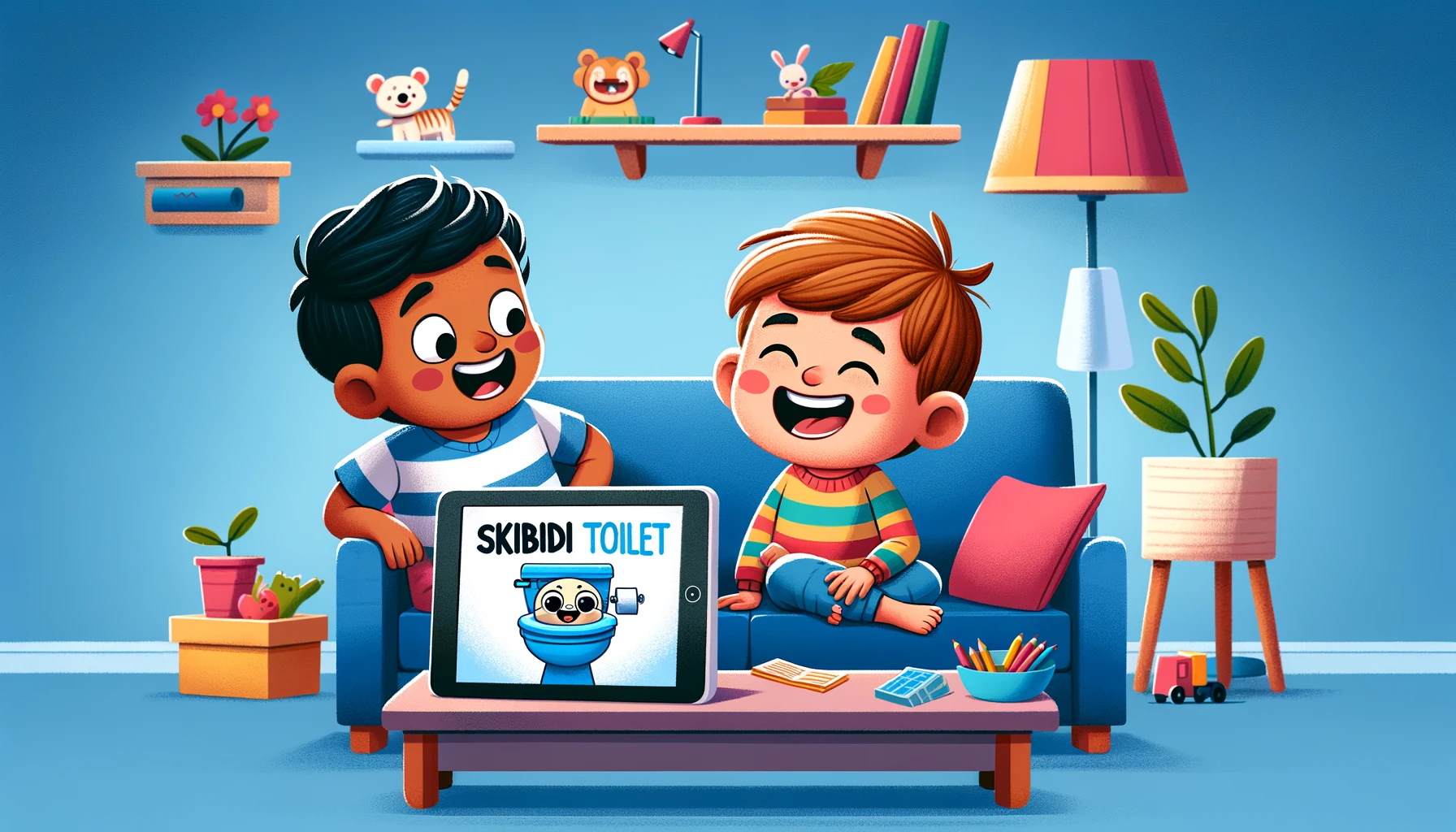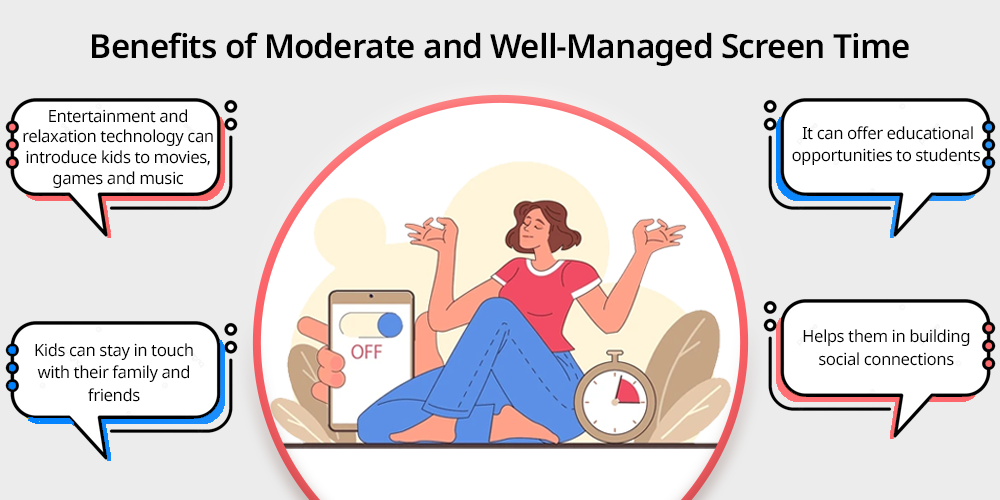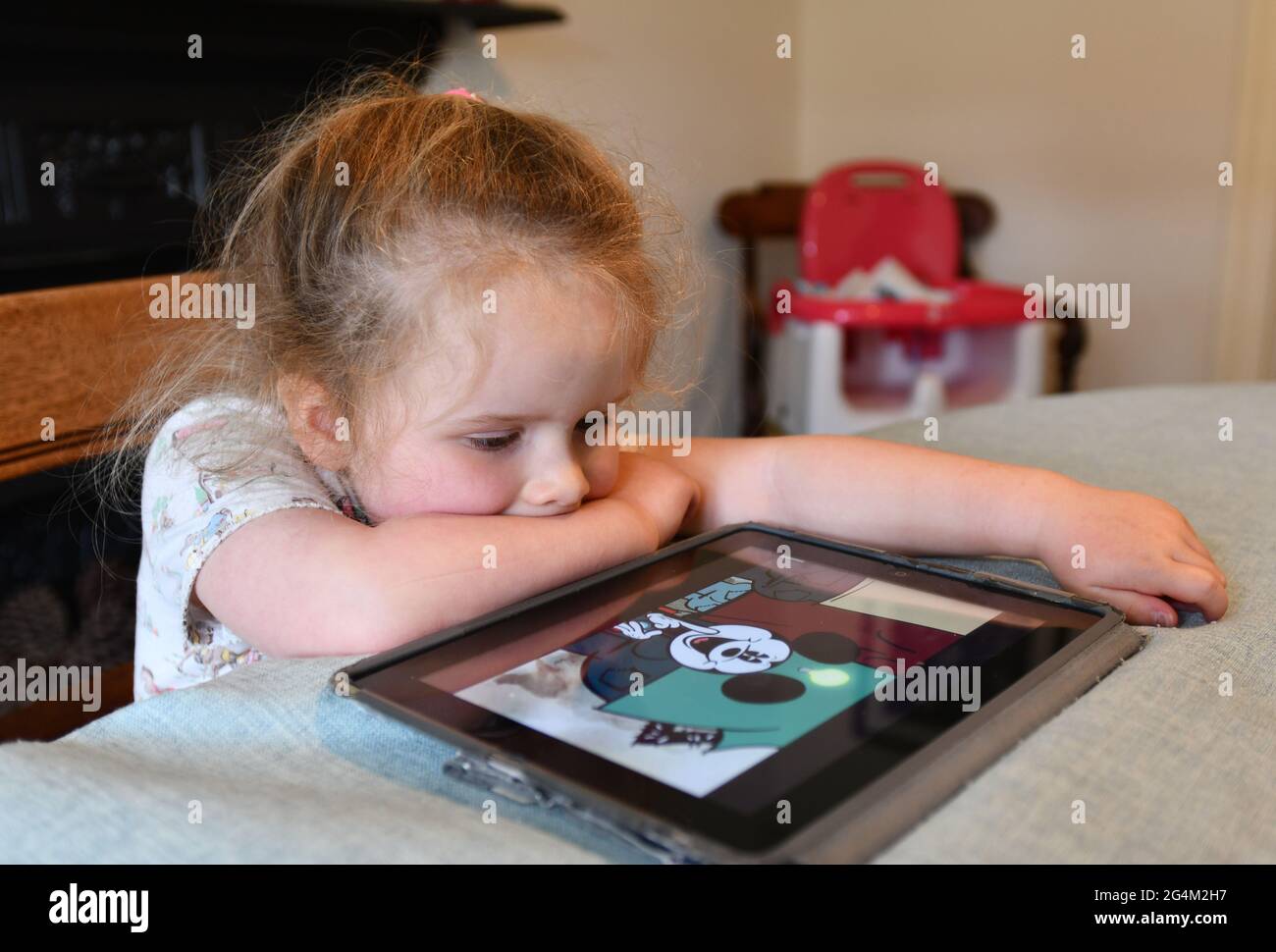Why Do Kids Say "Skibidi Toilet"?
Why Do Kids Say "Skibidi Toilet"?
Understanding the Viral YouTube Phenomenon That's Captivating Children Worldwide

If you're a parent or educator wondering why children everywhere are suddenly obsessed with saying "Skibidi Toilet," you're not alone. This bizarre phrase has become the latest viral phenomenon sweeping through playgrounds, classrooms, and family dinner tables worldwide. Understanding this trend is crucial for parents navigating the complex landscape of modern digital culture and children's entertainment.
The "Skibidi Toilet" phenomenon represents more than just a silly phrase—it's a window into how today's children consume and interact with digital content. From YouTube videos that have garnered billions of views to playground chants that echo in every elementary school, this trend has become a defining aspect of Generation Alpha's cultural identity.
Quick Answer: "Skibidi Toilet" is a viral YouTube series featuring surreal, toilet-based characters in ongoing battles. Kids are drawn to its absurd humor, catchy phrases, and meme-worthy content that spreads rapidly through social media and peer groups.
What Exactly is "Skibidi Toilet"?
"Skibidi Toilet" is a YouTube series created by animator Alexey Gerasimov that has taken the internet by storm. The series features an ongoing war between toilets with human heads singing the nonsensical "Skibidi" song and various mechanical characters, including cameramen and speakermen, all rendered in a distinctive machinima style using video game assets.

The Origin Story
The phenomenon began in February 2023 when Gerasimov, then 23 years old and from Georgia (the country, not the U.S. state), uploaded the first "Skibidi Toilet" video to YouTube. What started as a simple, surreal animation quickly exploded into a cultural phenomenon, accumulating over 17 billion views across all episodes.
The series draws its name from "Skibidi," a nonsensical sound popularized by the song "Dom Dom Yes Yes" by Lithuanian band Little Big, combined with the absurdist toilet-based characters that serve as the main protagonists and antagonists of the ongoing narrative.
Why Children Are Obsessed
The appeal of "Skibidi Toilet" to children lies in several psychological and cultural factors that make it irresistible to young minds. Understanding these factors helps parents better comprehend their children's fascination with seemingly nonsensical content.

The Psychology Behind Children's Attraction to Viral Content
Absurdist Humor and Cognitive Development
Children's brains are naturally wired to find absurd and unexpected content hilarious. The "Skibidi Toilet" series taps into this psychological tendency by presenting scenarios that completely defy logic and adult expectations. This type of humor, known as absurdist comedy, appeals to children's developing sense of what's normal versus what's bizarre.
From a developmental perspective, children between ages 6-12 are in a stage where they're learning social norms and boundaries. Content that deliberately breaks these boundaries—like toilets singing and engaging in battles—provides a safe way for children to explore chaos and rule-breaking without real-world consequences.
Cognitive Appeal
- Unpredictable storylines keep attention
- Repetitive elements aid memory retention
- Visual humor transcends language barriers
- Simple concepts with complex execution
Social Connection
- Shared cultural reference among peers
- Creates in-group identity and belonging
- Facilitates playground conversations
- Meme-worthy content for social sharing

The Role of Repetition and Catchy Elements
The "Skibidi" catchphrase itself demonstrates the power of repetition in children's content. Like nursery rhymes and traditional children's songs, the repetitive nature of "Skibidi Toilet" makes it extremely memorable and easy to replicate. This repetition serves several important functions in child development:
- Memory Reinforcement: Repetitive content helps strengthen neural pathways and improves recall
- Comfort and Predictability: Even within chaos, repeated elements provide psychological comfort
- Social Bonding: Shared repetitive experiences create group identity and belonging
- Language Development: Catchy phrases, even nonsensical ones, support phonetic awareness
Understanding Parental Concerns and Valid Worries
Many parents express legitimate concerns about the "Skibidi Toilet" phenomenon. While the content isn't explicitly harmful, several aspects warrant parental attention and thoughtful guidance. Understanding these concerns helps create a balanced approach to managing children's digital consumption.
Common Parental Concerns
- Potential negative impact on attention span and focus
- Exposure to mildly violent or chaotic content
- Excessive screen time and YouTube dependency
- Displacement of educational or creative activities
- Inappropriate behavior mimicking at school or home
The "Skibidi Toilet Syndrome" Phenomenon
Some educators and child psychologists have identified what they term "Skibidi Toilet Syndrome"—a condition where children become so obsessed with the content that it interferes with their daily activities, learning, and social interactions. While not a clinical diagnosis, this phenomenon highlights the potential for viral content to become problematically consuming for young minds.

Age Appropriateness and Content Concerns
While "Skibidi Toilet" doesn't contain explicit violence or inappropriate language, it does feature themes of conflict, battle, and mild scary elements that may not be suitable for very young children. The surreal and sometimes chaotic nature of the content can be overwhelming for sensitive children or those prone to anxiety.
Parents should consider their individual child's maturity level, sensitivity to stimulating content, and overall media consumption habits when determining appropriate exposure levels to such content.
Effective Digital Parenting Strategies for the Modern Age
Navigating the digital landscape with children requires thoughtful strategies that balance freedom with guidance. Rather than completely restricting access to popular content like "Skibidi Toilet," parents can implement approaches that promote healthy digital citizenship and critical thinking skills.

Creating Balanced Screen Time Rules
Establishing clear, age-appropriate screen time boundaries helps ensure that viral content consumption doesn't overwhelm other important activities. The American Academy of Pediatrics recommends specific guidelines for different age groups, which can be adapted to include considerations for viral content consumption.
Ages 2-5
- • 1 hour high-quality content daily
- • Co-viewing with parents preferred
- • Avoid fast-paced, overstimulating content
- • Prioritize educational programming
Ages 6-11
- • 1-2 hours on school days
- • Flexible weekends with boundaries
- • Discuss content and themes together
- • Balance with physical activities
Ages 12+
- • Collaborative boundary setting
- • Focus on quality over quantity
- • Encourage critical media literacy
- • Model healthy usage patterns
Active Media Engagement Techniques
Instead of passive consumption, encourage active engagement with digital content. This approach transforms potentially mindless entertainment into opportunities for learning, creativity, and family bonding.
Conversation Starters for Parents
- "What do you think makes this content funny to your friends?"
- "How do you think the creators came up with these ideas?"
- "What other types of stories or videos do you enjoy?"
- "Would you like to create your own funny characters or stories?"

Nurturing Imagination Through Traditional Storytelling and Educational Alternatives
While viral content like "Skibidi Toilet" serves a purpose in children's digital culture, it's essential to balance this consumption with rich, meaningful storytelling experiences that nurture imagination, emotional intelligence, and cognitive development. Traditional stories, bedtime tales, and educational narratives offer profound benefits that algorithmic content often cannot provide.
The Irreplaceable Value of Bedtime Stories
Bedtime stories represent one of the most powerful tools for child development, offering benefits that extend far beyond entertainment. Unlike passive video consumption, interactive storytelling engages multiple cognitive processes simultaneously, creating neural pathways that support learning, empathy, and creativity.

Emotional Benefits
- • Builds emotional vocabulary and expression
- • Develops empathy through character experiences
- • Provides comfort and security before sleep
- • Strengthens parent-child bonding
- • Reduces anxiety and promotes relaxation
Cognitive Benefits
- • Enhances vocabulary and language skills
- • Improves listening and concentration
- • Stimulates imagination and creativity
- • Develops narrative understanding
- • Promotes critical thinking skills
Classic Fairy Tales and Their Timeless Appeal
Fairy tales have captivated children for centuries because they address universal themes and psychological needs that remain constant across cultures and generations. Unlike viral content that may be here today and gone tomorrow, classic tales provide stable reference points for understanding morality, courage, and human nature.

Modern research in child psychology supports the continued relevance of traditional fairy tales. These stories provide safe frameworks for children to explore complex emotions, moral dilemmas, and life challenges within protective narrative boundaries.
Educational Stories and Moral Development
Educational stories that incorporate moral lessons serve as powerful tools for character development. Unlike content designed primarily for viral appeal, educational narratives are carefully crafted to promote specific values, problem-solving skills, and ethical reasoning.
Pro Tip: Create a balanced media diet that includes 70% educational/meaningful content and 30% entertainment content. This ratio helps ensure children receive the cognitive nutrients they need while still allowing for age-appropriate fun and social connection.
Creating Engaging Storytelling Experiences That Compete with Digital Content
To successfully divert children's attention from overwhelming viral content, parents and educators must create storytelling experiences that are equally engaging but far more enriching. The key lies in understanding what makes digital content appealing and incorporating those elements into traditional storytelling methods.
Interactive Storytelling Techniques
Modern children are accustomed to interactive digital experiences. Traditional storytelling can incorporate similar elements of participation and engagement to capture and maintain children's attention while providing superior developmental benefits.

Gamification Elements
- • Choose-your-own-adventure narratives
- • Character voice and sound effect participation
- • Prediction games and story outcomes
- • Role-playing different characters
Multimedia Storytelling
- • Illustrated storybooks with detailed artwork
- • Props and costume elements
- • Musical accompaniment and rhythm
- • Shadow puppets and visual aids
Social Storytelling
- • Family story creation sessions
- • Collaborative plot development
- • Character creation workshops
- • Story sharing with friends and relatives
Adventure Stories
- • Epic quests and heroic journeys
- • Mystery solving and detective work
- • Magical worlds and fantasy adventures
- • Animal adventures and nature exploration
Age-Appropriate Story Categories
Different age groups require different storytelling approaches and themes. Understanding developmental stages helps parents and educators select content that engages children at their current level while gently challenging them to grow.

Achieving Healthy Screen Time Balance in the Digital Age
The challenge for modern parents isn't to eliminate digital content entirely, but to create a healthy balance that allows children to participate in their peer culture while maintaining space for meaningful, developmental activities. This balance requires intentional planning and consistent boundaries.

The 50/30/20 Rule for Children's Media Consumption
Child development experts increasingly recommend a structured approach to media consumption that ensures children receive adequate exposure to educational content while still allowing for entertainment and social connection through popular media.
Educational Content
Stories, documentaries, learning apps, skill-building activities
Creative/Interactive
Drawing apps, music creation, storytelling games, building activities
Entertainment
Popular videos, games, viral content (including Skibidi Toilet)
Creating Screen-Free Zones and Times
Establishing clear boundaries around screen usage helps ensure that digital content doesn't overwhelm other important aspects of childhood development. These boundaries should be age-appropriate and consistently enforced across the family.
Recommended Screen-Free Times
- • First 30 minutes after waking
- • 1 hour before bedtime
- • During all meals
- • During homework/study time
- • During outdoor play time
- • During family activities
- • During creative/artistic pursuits
- • During reading time

Developing Critical Thinking Skills for Digital Media Literacy
One of the most valuable gifts parents can give their children in the digital age is the ability to critically evaluate media content. Rather than simply consuming whatever algorithm serves them, children need skills to assess quality, identify purpose, and make informed choices about their media consumption.
Teaching Children to Question Content
Critical media literacy begins with teaching children to ask thoughtful questions about the content they consume. These questioning skills help children become active participants in their media experience rather than passive recipients.
Essential Questions for Young Media Critics
Content Analysis Questions
- • Who made this content and why?
- • What is this trying to make me feel?
- • Is this teaching me something useful?
- • How does this make me want to act?
- • Would I recommend this to my friends?
Quality Assessment Questions
- • Does this help me learn or grow?
- • Am I better after watching this?
- • Does this respect other people?
- • Is this something I'm proud to watch?
- • What would my parents think about this?
Encouraging Content Creation Over Consumption
Children who create their own content develop deeper understanding of media production and become more discerning consumers. Encouraging creative expression helps shift children from passive consumption to active participation in their media landscape.

Story Creation Activities
- • Write and illustrate original fairy tales
- • Create family story journals
- • Develop character backstories
- • Write alternative endings to favorite stories
- • Create comic strips and graphic novels
Digital Creation Projects
- • Record family storytelling sessions
- • Create stop-motion animations
- • Develop educational video content
- • Design digital storybooks
- • Produce family podcasts
The Future of Children's Digital Content and Storytelling
Understanding trends like "Skibidi Toilet" helps us prepare for the evolving landscape of children's digital entertainment. As technology continues to advance and new platforms emerge, parents and educators must stay informed about emerging trends while maintaining focus on timeless developmental principles.
Emerging Technologies and Storytelling
Virtual reality, augmented reality, and artificial intelligence are beginning to transform how stories are told and experienced. While these technologies offer exciting possibilities for immersive storytelling, they also present new challenges for managing children's media consumption and ensuring healthy development.

Preparing Children for Future Media Landscapes
The best preparation for future digital challenges is building strong foundational skills in critical thinking, creativity, and emotional regulation. Children who develop these skills through quality storytelling experiences will be better equipped to navigate whatever new media trends emerge.
Future-Ready Skills for Digital Natives
Cognitive Skills
- • Critical analysis
- • Pattern recognition
- • Information synthesis
- • Creative problem-solving
Emotional Skills
- • Self-regulation
- • Empathy development
- • Emotional intelligence
- • Stress management
Social Skills
- • Digital citizenship
- • Collaborative creation
- • Respectful communication
- • Cultural awareness
Practical Implementation: Creating Your Family's Digital Wellness Plan
Moving from understanding to action requires a concrete plan that works for your family's unique circumstances. This practical framework helps parents implement healthy digital habits while maintaining family harmony and respecting children's social needs.
Week-by-Week Implementation Guide
Change is most successful when implemented gradually. This four-week plan helps families transition from unlimited digital consumption to a balanced approach that includes rich storytelling experiences and meaningful screen time.

Week 1: Assessment and Awareness
- • Track current screen time usage without judgment
- • Introduce one daily story time session (15-20 minutes)
- • Begin conversations about favorite content and why it's appealing
- • Establish one screen-free meal per day
- • Create a cozy reading nook or storytelling space
Week 2: Gentle Boundaries
- • Implement the 50/30/20 content rule
- • Add a second daily story session (morning or afternoon)
- • Introduce critical thinking questions during co-viewing
- • Establish screen-free time before bed (30 minutes)
- • Begin a family story journal or creative project
Week 3: Creative Integration
- • Replace 30 minutes of passive viewing with creative activities
- • Encourage children to create their own stories or characters
- • Implement family media review discussions
- • Expand screen-free zones (bedrooms, dining areas)
- • Introduce longer-form stories (chapter books, serials)
Week 4: Long-term Sustainability
- • Establish permanent daily schedules that include story time
- • Create systems for child input on content choices
- • Develop family traditions around storytelling
- • Set up regular digital wellness check-ins
- • Plan special storytelling events or activities
Addressing Resistance and Challenges
It's normal for children to resist changes to their established routines, especially when those changes involve reducing access to preferred content. Understanding common challenges and having strategies ready helps parents navigate this transition successfully.
Common Challenges
- • "But all my friends watch it!"
- • Tantrums when screen time ends
- • Resistance to "boring" stories
- • Peer pressure and FOMO
- • Parent consistency struggles
Effective Solutions
- • Acknowledge feelings while maintaining boundaries
- • Use timers and visual schedules
- • Start with high-interest story topics
- • Connect with like-minded families
- • Create accountability systems for parents
Transform Your Child's Story Experience Today
While "Skibidi Toilet" and similar viral content will come and go, the power of meaningful storytelling remains constant. Give your children the gift of imagination, empathy, and wonder through carefully curated bedtime stories and educational tales.
✨ Discover Magical Bedtime Stories
Join thousands of families who have transformed their children's bedtime routine with our collection of enchanting, educational, and heartwarming stories designed to nurture young minds and create lasting memories.
Explore Our Story CollectionCreate bedtime magic that lasts a lifetime
Conclusion: Balancing Digital Culture with Timeless Values
The "Skibidi Toilet" phenomenon serves as a fascinating case study in how digital content spreads through children's culture and captures young imaginations. While parents may find the content bewildering or concerning, understanding its appeal provides valuable insights into children's psychological needs and social dynamics.
Rather than dismissing or completely restricting access to viral content, the most effective approach involves creating balance, fostering critical thinking skills, and providing rich alternatives that satisfy children's need for entertainment while supporting their cognitive and emotional development.
The enduring power of storytelling—whether through bedtime stories, fairy tales, or educational narratives—remains one of the most important tools parents have for nurturing their children's growth. These timeless experiences provide stability, meaning, and developmental benefits that no algorithm-driven content can replicate.
"In a world of endless digital distractions, the simple act of sharing a story with a child becomes a radical act of love, attention, and intentional parenting."
As we navigate this digital landscape with our children, remember that every viral trend will eventually fade, but the memories created through meaningful storytelling experiences will last a lifetime. By maintaining this perspective and implementing thoughtful strategies, parents can help their children develop healthy relationships with digital media while preserving the magic and wonder of childhood.
The goal isn't to shield children from their digital culture entirely, but to ensure they have the tools, experiences, and values necessary to engage with it thoughtfully and beneficially. Through this balanced approach, we can raise children who are both digitally literate and deeply grounded in the timeless human values that great stories have always conveyed.
Related Articles and Resources
Digital Parenting Guide
Comprehensive strategies for managing children's technology use in the modern world.
Read More →Best Bedtime Stories
Curated collection of age-appropriate stories that promote healthy development and peaceful sleep.
Explore Stories →Educational Content
Quality educational resources that make learning engaging and fun for children of all ages.
Learn More →

